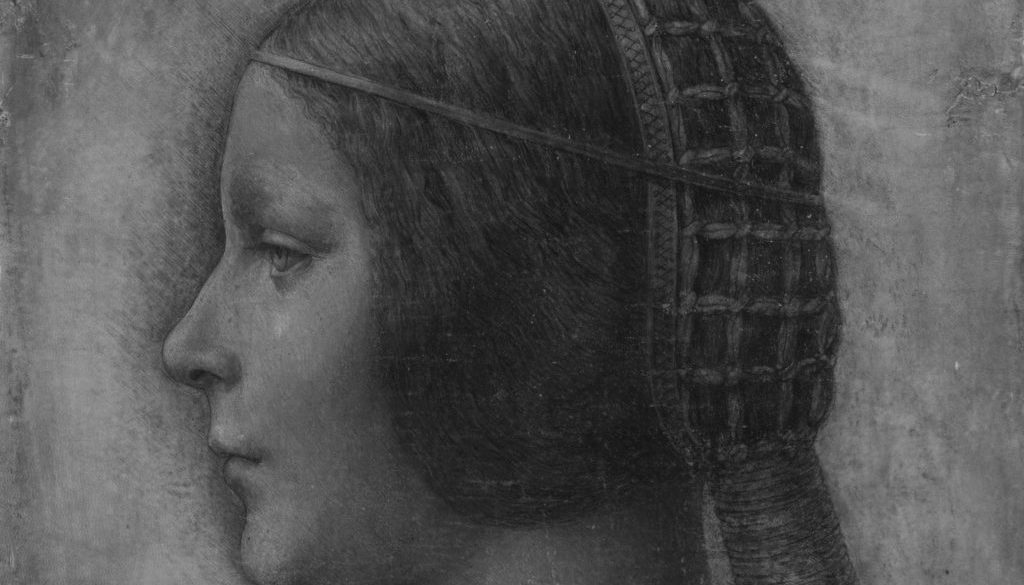Press release on
Leonardo portrait

This (press release attached without the pics) should more or less settle the arguments –- though probably not knowing the myopia of the art world:
STRICTLY EMBARGOED UNTIL 28TH SEPTEMBER
The Original Source of the New Leonardo Portrait Discovered
In 2010, Martin Kemp and Pascal Cotte published a book on an exceptional and innovatory portrait on vellum executed in inks and coloured chalks. Controversy ensued. The portrait had been sold as a German early 19th-century Head of a Young Girl in Profile to the Left in Renaissance Dress at a Christie’s sale in New York on 30 January 1998. It was bought by the dealer Kate Ganz for $21,850. The current owner, who purchased it from Ganz for the price she had paid for it, intuited that it was an original Renaissance portrait, possibly by Leonardo da Vinci.
The attribution to Leonardo was confirmed by Nicholas Turner, Carlo Pedretti, Alessandro Vezzosi, Mina Gergori, Cristina Geddo and others. The chief opposition came from the New York experts and observers who had missed it when it was in the hands of Christie’s and Ganz, and unsurprisingly from Christie’s, who are subject to legal action from Jeanne Marchig, who had consigned the drawing for sale.
Given the three stitch holes along the left margin of the parchment, Kemp and Cotte concluded that portrait had originally been bound into a codex, most probably one of the luxury volumes presented at key moments to the “princesses” at the Sforza court. They provisionally identified the sitter as Bianca, the illegitimate daughter of Duke Ludovico Sforza, who was legitimised and married in 1496 to Galeazzo Sanseverino, the duke’s commander. She tragically died only a few months later.
New research by Kemp and Cotte shows that the portrait was excised from the eulogistic history of Francesco Sforza (the Duke’s father), the Sforziad by Giovanni Simonetta. It was printed on vellum and is now in the National Library in Warsaw. The volume was specifically produced for the marriage of Bianca and Galeazzo in 1496.
Kemp and Cotte demonstrate that a corresponding page has been removed at some unknown date from the Warsaw book, and that the vellum of the portrait closely matches in all respects the physical characteristics of the opening pages. The stitch holes in the vellum of the portrait match those in the book.
The technical analyses are being published in full on:
http://www.lumiere-technology.com/news/bp-research.htm;
http://www.bbk.ac.uk/hosted/leonardo/LaBella.pdf
http://www.universalleonardo.org/
They demonstrate that the portrait was placed after the introductory texts and before frontispiece. We can now be confident that the portrait portrays Bianca, in celebration of her marriage, and that Leonardo was the artist. The new findings are included in the revised edition of Martin Kemp’s Leonardo (Oxford University Press, 6 Oct).